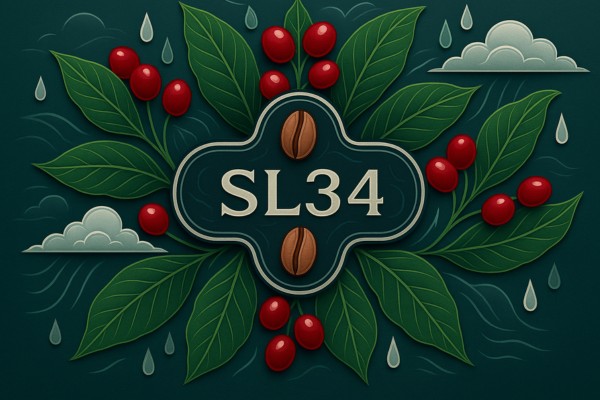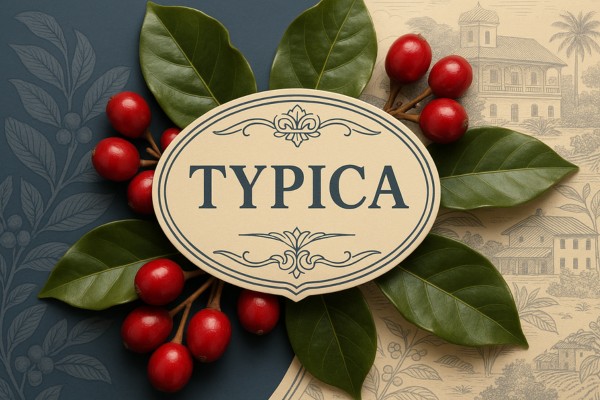
Castillo: The New Colombian Standard
Meet Castillo, the modern, rust-resistant coffee variety developed by Colombia's national coffee research center, Cenicafé. Learn how it was designed to replace Caturra and Catimor, offering farmers high yields and disease resistance while aiming for a better cup quality that mimics the classic Colombian profile.
Castillo: A Modern Coffee for a Modern Colombia
Castillo is a coffee variety that represents the cutting edge of coffee breeding and a massive shift in Colombia's coffee landscape. Developed by Colombia’s National Coffee Research Center, Cenicafé, and released in 2005, Castillo was designed with a clear purpose: to be a highly productive, disease-resistant coffee plant that still produces a good quality cup, reflective of the classic "Colombian coffee" profile.
It is not a single variety, but rather a composite of different lines, all descendants of the Catimor group. It was created to give farmers a superior alternative to the older Caturra variety (which is highly susceptible to rust) and the first-generation Catimors (which often had quality issues).
Today, Castillo and its newer regional variations are the most widely planted coffees in Colombia, a testament to a successful national effort to protect the country's coffee industry from the threat of coffee leaf rust.
Cenicafé's Crowning Achievement
The development of Castillo was a long and painstaking process undertaken by Cenicafé, the research arm of the Colombian Coffee Growers Federation (FNC). Their goal was to create a plant that checked all the boxes for the modern Colombian coffee farmer.
The process involved crossing various Caturra and Timor Hybrid descendants over multiple generations. The key breakthrough was not to release a single "best" selection, but to blend several promising lines together to create the final "Castillo" variety. This approach, known as a "composite cultivar," provides a wider genetic diversity within the variety. This diversity makes it less likely that a new strain of coffee leaf rust will be able to wipe out the entire crop.
Following the success of the original Castillo, Cenicafé has released further regional variations, such as Castillo Naranjal, La Trinidad, and El Rosario, which are specifically adapted to the microclimates of different coffee-growing regions within Colombia.
The Castillo Cup Profile
The primary goal for the cup quality of Castillo was to replicate the classic, clean, and balanced profile that Colombian coffee is famous for, which was largely established by the Caturra variety.
- Acidity: The acidity is typically medium and can be quite bright and pleasant, often with notes of citrus and red fruit.
- Body: It generally has a medium, smooth body.
- Aroma: The aroma is often sweet and caramelly.
- Flavor: Look for a clean and balanced flavor profile with notes of caramel, chocolate, citrus, and sometimes a hint of red fruit.
While many specialty coffee buyers still believe that Castillo cannot reach the same heights of complexity and elegance as a high-quality Caturra or Bourbon, there is a growing consensus that it is a significant improvement over the first-generation Catimors. A well-grown and well-processed Castillo can be a very solid and enjoyable coffee, and it is becoming increasingly common to see it featured as a single origin offering.
The Farmer's Perspective
From an agricultural standpoint, Castillo offers a suite of benefits that have made it an obvious choice for the majority of Colombian coffee farmers.
- High Yield and Dwarf Stature: Like its Caturra ancestor, it is a small, compact plant that can be planted densely and produces very high yields.
- Disease Resistance: Its key feature is its strong resistance to coffee leaf rust (roya) and Coffee Berry Disease (CBD). This provides farmers with crucial economic security.
- Adaptability: The variety is well-adapted to the diverse growing conditions found throughout Colombia's mountainous coffee regions.
The widespread and proactive replanting of farms with Castillo, heavily promoted by the FNC, is credited with saving the Colombian coffee industry from the devastating rust epidemic that swept through Latin America from 2008-2013.
Conclusion: The Pragmatic Choice for a Nation
Castillo is more than just a coffee variety; it is a symbol of a nation's commitment to scientific research and the protection of its most important agricultural product. It represents a pragmatic and highly successful effort to balance the competing needs of productivity, disease resistance, and cup quality.
While the debate about its quality ceiling compared to traditional varieties will surely continue in specialty circles, there is no denying its impact. Castillo has secured the livelihood of hundreds of thousands of Colombian coffee farmers and has ensured that the world can continue to enjoy the classic, clean, and balanced profile of Colombian coffee. It is the new standard, a modern workhorse for a modern coffee powerhouse.


